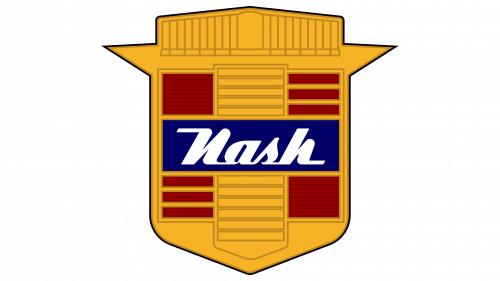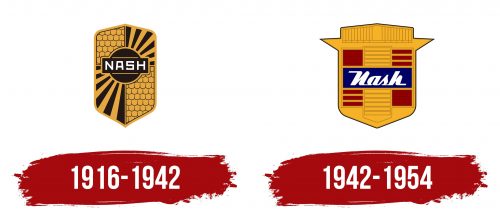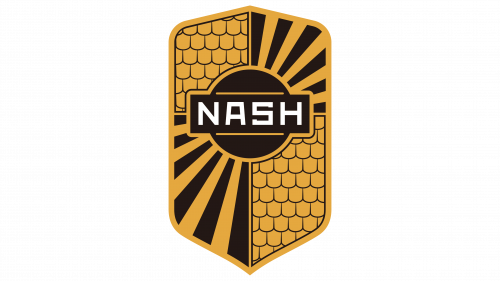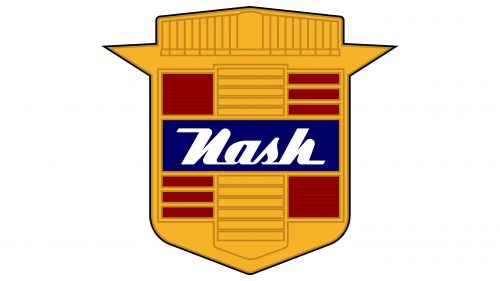The Nash Motors logo is swift like a bird, luxurious, and shining like a premium gift. Owning a car from this brand feels like winning the lottery. Its perfect finish and impeccable engine performance create the image of a worthy vehicle in the American automotive industry.
Nash Motors: Brand overview
In 1916, Charles Nash, the former president of General Motors, set out on a new venture by founding Nash Motors in Kenosha, Wisconsin. He joined forces with Edouard Lefebvre, a Belgian racer and engineer known for his exceptional technical skills, which greatly influenced the engineering of Nash’s early vehicles.
As the 1920s approached, Nash introduced sleek and innovative car models that stood out for their streamlined body designs. In 1917, Nash took a step ahead in comfort by integrating a gas heater into the dashboard, providing warmth during cold weather. By 1934, the company leaped over safety by using tempered glass for windshields, offering greater protection to passengers.
Nash responded with ingenuity during the Great Depression of the 1930s. The 1938 Lafayette model featured a “vacuum” control system, which helped cut production costs. This model also introduced groundbreaking front suspension and ventilation systems, enhancing the driving experience.
In 1949, Nash unveiled the Nash Airflyte, a car renowned for its aerodynamic design, which was ahead of its time. Amid fierce market competition in 1954, Nash merged with Hudson Motor Car Co., forming American Motors Corporation (AMC). Though initially considered the “Rebel Motor Company,” the name AMC was chosen.
Nash continued to innovate in the compact car market with the 1957 introduction of the Nash Rambler, one of the first affordable and comfortable family cars. The Ambassador line remained a symbol of prestige, with the 1956 model being the world’s first production car to feature a warning safety system.
The final Nash-branded car was produced in 1957, after which AMC marketed its models under the Rambler and AMC brands. Despite its relatively brief existence, Nash Motors left a lasting impact on the automotive industry, challenging giants like Ford and GM.
When Chrysler acquired AMC in 1987, the Nash brand faded into history. Yet, its legacy lives on through classic retro cars, cherished as some of the most iconic vintage American vehicles.
Meaning and History
What is Nash Motors?
Nash Motors was a trailblazing American car manufacturer celebrated for its stylish and inventive vehicles. The company earned acclaim for pioneering engineering breakthroughs and distinctive designs, such as creating the first mass-produced car with unibody construction and introducing America’s first compact car.
1916 – 1942
The Nash Motors logo is shield-shaped, symbolizing protection and reliability. In the shield’s center is a circle representing a wheel or the sun. This element highlights movement and energy, which are characteristics of the brand’s vehicles.
The shield is divided into four parts, two of which have identical designs. This division reflects the company’s initial approach to producing luxury cars under the LaFayette brand and more affordable vehicles under the Ajax brand.
The sun rays in one part symbolize luxury cars’ premium quality and refined finish. In contrast, the tiles in another part represent the reliability and durability of more affordable cars.
The shield’s shape emphasizes the company’s dedication to offering cars that can last long and withstand various conditions. This symbolic approach shows the commitment to providing quality and reliable vehicles for customers with different income levels.
The brand name is at the center of the image. As was customary at the turn of the 19th and 20th centuries, the company is named after its founder, Charles W. Nash. This highlights the businessman’s responsibility for the quality of the products, indicating the high standards and reliability of Nash Motors vehicles.
1942 – 1954
The emblem mimics the shape of a car’s front bumper, creating a sense of movement and powerful force directed at the viewer. The image’s scale and strength emphasize the vehicles’ quality and durability.
The colors of gold and velvet suggest a luxurious appearance. The cars featured rich finishes and gleaming details. According to Nash’s slogans, the brand aimed to give customers more value for their money. Small wings are added to the golden luxury as if the emblem is flying rather than driving.
The central blue stripe with the white name stands out starkly from the rest of the image in terms of color. It appears as an element from the future—modern design against the backdrop of regal symbols from the past. The logo reflected the years of experience and the development path the brand had undergone. The shade emphasized that the company followed the entrepreneur’s ideas, with technical innovations at the core of the products.
The font resembled a handwritten signature, like the owner confidently placing his name on the cars, guaranteeing their quality.






